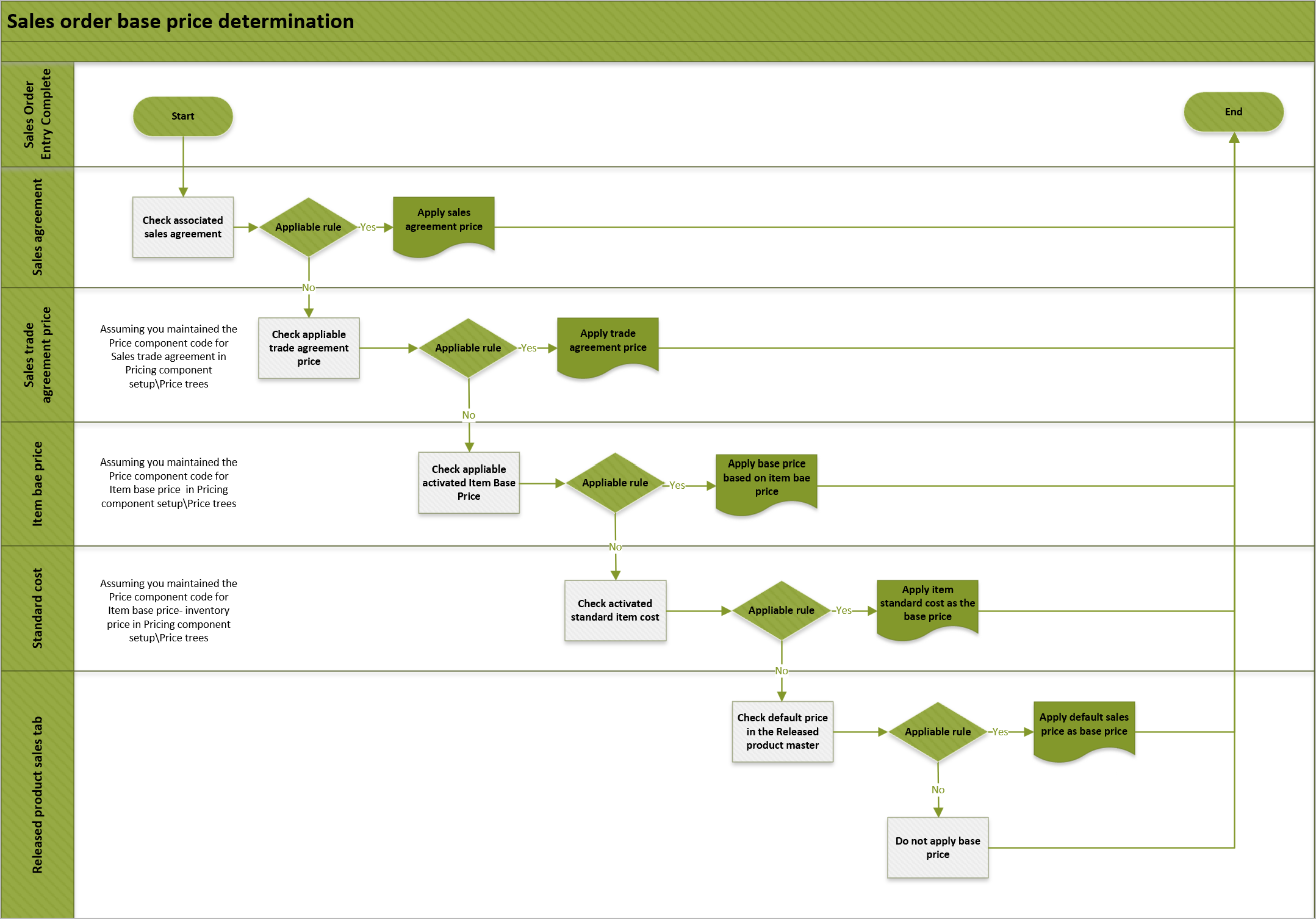Sales order base price determination rules (preview)
[This article is prerelease documentation and is subject to change.]
This article describes the price determination rules for calculating the sales order base price.
| Terms | Definition, usage, and notes | Price component type |
|---|---|---|
| Unit price | The price that's calculated for each unit in a sales order. It's calculated by using the following formula: Unit price = Base price ± Margin component price adjustments. | |
| Base price | The basis for price adjustments. It's intended for all customers and is the standard rate for general purposes.
|
|
| Sales trade agreement price | The price that reflects a negotiated pricing strategy for a collection of customers and a group of specific products. You can configure the system so that it uses one of the following formulas to calculate the unit price based on the sales trade agreement price:
|
Sales trade agreement |
| Item base price | The Item base price page lets you set prices for each item by using either calculated values or manually entered values. Calculated prices use the following formula: Item base price = Vendor list price ± Vendor term agreements. | Any of the following:
|
| Standard cost | The cost version of an item that's calculated by using the standard cost model. | Base price - inventory price |
| Margin component price adjustments | You can set up layers of margin components to adjust the base price up (positive) or down (negative). Margin component price adjustments have a calculation sequence and can be compounded to get the total adjustment price. | Margin component |
| Sales agreement | Although the Unified pricing management module respects sales agreement rules, the sales agreement feature isn't otherwise integrated with the Unified pricing management module. |
The following flow chart shows the sales order base price determination rules.
